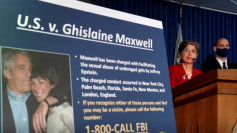The Centers for Disease Control and Prevention (CDC) released updated guidance last Friday, significantly changing its approach to COVID-19 quarantine recommendations. The new guidelines state that infected individuals no longer need to isolate themselves from school and work for five days, provided they are fever-free for 24 hours without using fever-reducing medicine and their other symptoms have improved. However, this change has sparked concern among public health experts who worry that the CDC's attempt to treat COVID-19 like other common respiratory viruses, such as influenza and respiratory syncytial virus (RSV), could misrepresent the risks associated with the virus.
"This guidance provides practical recommendations and information to help people lower risk from a range of common respiratory viral illnesses, including COVID-19, flu and RSV," the CDC states. While some experts acknowledge that crafting a unified public health policy makes sense from a communication perspective, others argue that it does a "disservice" to public health by failing to recognize the distinct characteristics and higher burden of illness associated with COVID-19.
Dr. Syra Madad, an infectious disease epidemiologist at Harvard's Belfer Center for Science, told Salon, "I don't want people to think that COVID is on par with flu, because it's not on par with the flu. You're seeing many more hospitalizations and deaths with COVID." She added that the U.S. population is not as healthy compared to other countries, with high rates of obesity, diabetes, and chronic cardiac disease, which are associated with a higher risk of severe COVID-19 infections.
Dr. Rajendram Rajnarayanan of the New York Institute of Technology campus in Jonesboro, Arkansas, expressed his dissatisfaction with the guidelines, stating that "COVID-19 and flu should not be used in the same sentence in a guideline." He emphasized that the guidelines treat COVID-19 like a disease that only spreads when people exhibit symptoms, despite evidence suggesting that more than half of COVID-19 transmission occurs among asymptomatic or pre-symptomatic individuals.
The change in guidance has also raised concerns about the potential for increased spread of the virus. Dr. Kaitlin Sundling, a physician-scientist, pathologist, and member of the advocacy group the People's CDC, told Salon that the new guidance "makes the situation worse" and "has a great risk of putting people into their daily lives and daily activities while they are still contagious."
Experts also point out that the lack of appropriate paid time off to complement the change in guidance could exacerbate the problem. "They can say, 'well, we can't build a public health policy that eliminates the five day isolation period when we don't have paid sick leave,'" Madad said, suggesting that the CDC could be better advocates for such policies.
Despite the criticism, Dr. Rajnarayanan urges people to read the guidance themselves to understand its implications fully. The guidance includes data on what influenced the agency's decision and encourages individuals to take extra steps to prevent spreading the infection once they have resumed their usual activities, such as getting vaccinated, washing hands frequently, and using air filtration systems.
As the debate surrounding the CDC's updated COVID-19 guidelines continues, it is clear that public health experts remain divided on the potential impact of these changes. While some acknowledge the need for a streamlined approach to respiratory virus guidance, others caution against downplaying the unique risks associated with COVID-19 and the importance of maintaining adequate isolation periods to prevent further spread of the virus.






